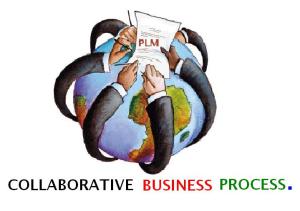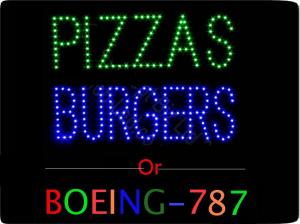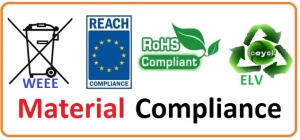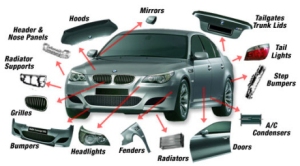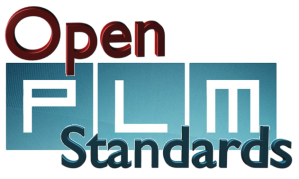Simplifying the rules of the game called “buying”
Making a right choice all the time is never so easy. It’s been almost a month that I am thinking about buying a Smartphone and finding it extremely difficult to make a decision. In the last few years we have witnessed a great technological advancement in shopping experience both in the real world and as well as in the virtual world but as a consumer I have never been satisfied. The reason for my dissatisfaction is because of the way the vendors puzzle the consumer like me about the product feature offerings and it’s pricing. The enormous amount of choices available in front of my eyes leads me nowhere and makes me think twice and compare each and every feature or offerings many times before making my decision. For instance, one phone appears to be longer than the normal pocket size and another phone looks quite bulky. Also, sometimes we have an unusual experience which takes us by surprise, like for instance some very good phones don’t come with adaptors whereas some other average phones come with wireless charging. This stops me to ask a question – is this a consumer issue or a phone vendor issue? If it’s a vendor issue then do they really understand Product Configuration concepts?
The answer to such an issue comes in many folds but first and foremost requirement for any vendor is to have a good product configuration solution. A unique solution that enables the vendor to reduce complexity and also read the minds of their consumers. Product configuration methodology can be explained in different contexts such as– the System Engineering process or the most contemporary Sales Configuration process. In this blog, my focus is more on the concepts behind the Product Configuration process and what is that drives the whole process via simple Smart phone analogy. In order to cater to the market needs, the vendor has to understand the psychology of the consumers and also have a good product configuration solution which will enable them to control the product diversity to an extent. The best-in class product configuration solution must follow certain principles or well known concepts in order to improve accuracy and thereby increase consumer satisfaction.
Let’s dive in to the product configuration world and introspect the well known product configuration concepts available in the current market – Year 2012.
Product configurations are basically unique set of features, sub features and they also define the quantity of each of the selected features. These features are decided based on the market needs. The choices available for the consumers are determined completely based on something called as rules. The rules drive the product configuration.
Rules are the backbone of any product configuration solution. These rules are predefined by the vendors during the system engineering process. In layman terms, rules are – for instance, if you are looking to buy a white colour 16 GB Smartphone then all the related information based on your choice are dynamically displayed on the web page for further selections. The rules are tied to the choices that you make and are often dynamically calculated upon your interaction. Rules basically come in two forms – the traditional program based rules and the modern constraint based rules. Constraint based rules are popular and because of its simplicity it is widely used in highly complex and very dynamic business environments. Constraint based rule engines are applied where configuration decisions are made dynamically based on inputs provided by the consumer.
Rules are expressed in several forms but some of the well known concepts are –
- Compatibility Rules – this type of rule allows you to express compatibility or incompatibility between choices
- Resource Rules – used to model production and consumption of resources
- Extension Rules – program based rules
- Preference Rules – set number of choices based on selection
Compatibility Rules
Compatibility rules are one of the most commonly used rules. The compatibility rule helps us define compatibility relationship between various Product Line features, Product specific features and also Product Variant features. They define a relationship between two features and there are numerous ways of defining it such as Incompatibility, Co-dependency and also based on Necessity. Let’s take the same Smartphone example to understand compatibility rules. Most Smart phones come with adaptors and we know that specifications for these adaptors are different in different countries. How can a vendor arrive at unique product packaging for each of these countries? The answer is quite simple – have a compatibility rule defined on adaptor for each of these countries. If the consumer chooses his country as United Kingdom then the product configuration process directly chooses an UK adaptor. This is achievable only when the Product Managers at the Smartphone companies define a compatibility rule or relationship between the country and the adaptors used. In another approach let’s assume the consumers were allowed to choose the adaptors themselves and they make some wrong selections. In such a case, the product configuration process dynamically displays a visual cue depicting the incompatibility between those selected choices and forces the consumers to reselect the features. The process continues as long as the consumer makes the right choices. In some cases certain features become pre-requisite, let’s assume the vendor decides to buy UK adaptor from a UK supplier and US adaptor from a US supplier. The vendor will now have another rule between the consumer’s country, adaptor and with the supplier. This rule defines that when the consumer chose his country as UK then it is a necessity for the vendor to buy the adaptor from its UK supplier only.
Resource Rules
As the name suggests resource rules refers to the way the vendors can add rules into the system that defines the initial, minimum and maximum number of resources that can be ordered. For instance the vendor decides to sell Smart phones with single as well as dual SIM cards. The single SIM card phone may use up only one slot whereas dual SIM phone has to use 2 slots. Accordingly the vendor would define a resource usage rule in the system with initial and minimum number of slots as 1 and maximum number of slots as 2. This rule comes into play when the consumer opts for a single SIM or dual SIM phone and based on the consumer’s choice the Product Configuration process logically helps the vendors to place an order to its SIM card slot manufacturers or suppliers.
Extension Rules/Program Based Rules
A traditional form of rule where we define programmatically all the probabilities and is basically used to perform validations. They are programs written to perform checks when other forms of rules cannot be used for validations. These programs run after all the other configuration rules have been validated and return a pass/fail at the end of its execution. For instance, the Smart phone vendor can check in their ERP system whether the 10 Mega pixel cameras are available. If the camera is available then the process returns a pass or fails.
Preference Rules
In some situations the vendor may require to provide multiple choices to its consumer. For instance, when the consumer chooses to buy a Smart phone, then the consumer would also be provided with a set of choices such as Bluetooth device, a Protective case, headphones etc as more options. This is also sometimes referred to as cross-selling which enables the vendor to sell other related products along with its main product. Preference rules basically help the consumers to include or exclude their choices and at the same time help the vendor to finally arrive at product configuration and thereby a unique bill of material.
Conclusion
The rules play a very important role in defining product configuration and they act as a backbone in defining a unique consumer bill of material. The vendor’s ability to sell their products in the market entirely depends on the strategy they opt in defining the product configuration rules. The vendors also lose customers if they fail to deliver simplicity in their offerings and the simplicity in selling is achievable only if the vendor wisely uses a unique product configuration solution and consumers always look forward to buy the best available option in the market and always from a trustworthy vendor.
Dassault Systemes provides a unique solution for such a vendor requirement and it’s called ENOVIA Variant Configuration Central. Check out this product on Dassault Systemes website here.
Best Regards, Ajit Kini
Small Fishes are Catching Up with Configuration Management Solutions
Small Fishes are Catching Up with Configuration Management Solutions in engineering industries.
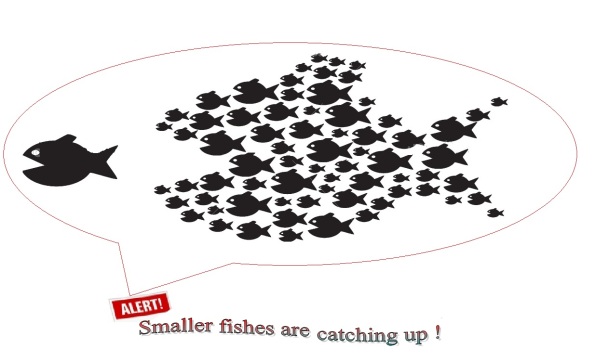
It feels good to make a comeback to the blogging world after hibernating for a good number of months. Through Perspectives blog my primary focus has been to reach out to industry thought leaders and explore different perspectives about product management processes. Its been tough to reach the good ones in the industry but it’s quite happening !
One thing boggled me this time was to find out and frivolously compare different configuration management solutions from PLM and non-PLM vendors available in 2012 market across engineering industries mainly the aerospace, automotive, high tech industries and the emerging verticals.
Its essential to note that some of the solution vendors market their solution as configuration management solution, some refer to it as variant configuration solution and some others simply refer as product configurator. Interestingly there is huge number of non-PLM vendors in the market who sell configuration management principles as a Sales Configurator or Product Configurator and surprisingly few CAD industries even refer to it as Bill of Material solution. Regardless of the different marketing names and offerings basically everybody sells Configuration Management principles.
According to one of my observation – it seems like here the small fishes (non-PLM vendors) have a greater edge in the market over the bigger fishes (PLM vendors) because of probably their unique selling point and wider focus and offerings. The bigger fishes have not been able to capitalize the current market due to their primary focus and perception of configuration management as ONLY system engineering solution per se whereas the smaller fishes have jumped several miles ahead by selling the CM principles as a Sales Configurator or Product Configurator.
I spent some time this week to google various configuration management solution(vendors) and collated a few findings in this blog post. Let’s have a look at some of the top PLM vendors in this market followed by what I call as small fishes – the non-PLM vendors.
As usual let me start with my favourite – Dassault Systemes !!!
Dassault Systemes offers CM as part of Portfolio Configuration Management solution and also as a BOM solution through ENOVIA Variant Configuration Central/ENOVIA Engineering Central. Some of the unique pointers of the solution are –
- Product Portfolio Definition
- Product Planning/Evolution
- Generic Product Architecture
- Configuration Rules
- Product Configurator
- BOM Generation
- Change Management
The most interesting fact about DS offering and the key differentiator is it’s 3D experience capabilities and its ability to integrate with best in class CAD solutions in the market.
Siemens offers Product Variation and Derivative Management solution through Teamcenter Enterprise knowledge foundation & Engineering process management and the unique pointers about their offerings are –
- Re-using product/process knowledge
- Facilitating mass customization
- Post-sales support
- Marketing and sales analysis
- Options (150 percent BOM) and all possible variants (100 percent BOMs)
PTC sells the solutions as Change & Configuration Management through Windchill PDMLink
- Rapidly find and access accurate change-related documentation,including a record of proposed changes
- impact of proposed changes on reliability parameters,regulations and product costs
- track changes for the next cycle of iterations
- Improve innovation by freeing up engineering time
- Reduce product cost by planning for effective changes to product configurations and minimizing product inventory
Interestingly there are a number of non-PLM vendors in the market who sell the configuration management solution as their sole product offerings. They are not classified among PLM vendors but they do sell CM solutions and have a greater market presence in the emerging industry verticals and some of them are listed below.
ConfigureOne offers Concept Enterprise Product Configurator and the unique thing about this product is its ease of use & presentation and they have some of inherent features of a CM solution such as-
- Rules Engine
- Pricing and Quotations
- Drawings and Visualization
- BOM’s, Routing, and Part Numbering
- Security and Workflow
Tacton sells the solution as sales configurator and they name it as TCsite. Some of the unique features as part of Tacton CM offerings are –
- Streamlines quote generation and quote management
- Can be used by the Internal Sales Force as well as Distributors and Resellers
- Integrates with TactonWorks for generation of CAD-drawings on-line
- Supports Enterprise Sales by letting all sales channels share the same source of information
- Designed to be easily integrated with surrounding platforms such as ERP, CRM, CAD, Visulization, and PLM systems
Cameleon Software also sells Product Configurator and the key features include –
- A dynamic constraint engine that drives real-time management of rules and options
- Interactive sales scripts supported by rich media
- Nested configuration to handle loops, packages and bundles
- Profile-driven branding, content, pricing and behavior
- 2D/3D drawing engine to generate production graphics
- Easy-to-use collaboration tools for configurable Product Lifecycle Management (PLM) with no programming skills required
Cincom Acquire provides the following as part of their Product Configurator solution –
- Shared knowledge in sales, manufacturing and engineering
- A tailored knowledge environment that fits your company’s needs
- 100% Accuracy on quotes, sales orders, BOMs and routings directly to sales without utilizing product experts
- Real-time Integration — Cincom’s business rules engine, Cincom Guru, enables integration with CAD, ERP and other enterprise applications including Microsoft Dynamics, SAP, Salesforce.com and Cinco
- Validation of design, configuration and product pricing
And to my surprise even IBM sells Product Configurator solution through Sterling Configure, Price and Quote and some of it’features of the product are
- Avoid order errors, such as incomplete configurations, inaccurate or constraint options selected for products
- Generate a custom Bill of Material
- Execute complex price and mathematical calculations
- Make context specific up-sell and cross-sell opportunities available
Finally to end this blog post – it was an interesting journey on google to find out various configuration management solutions available in the market in 2012 and one of the key observation is that the list of vendors in this area is ever increasing and it’s high time for the big fishes to have an eye over the small fishes.
Do let me know if I have missed out any good sales/product configurator vendors and I would be more than interested to know about them in the form of a comment to this blog post or an email.
Best Regards, Kini
PS: Some of the pointers mentioned here are directly reproduced from respective company websites. Please refer individual company websites for more information.
Design Tasks On Smart Phones Or Tablets – Foreseeing An Evolution !
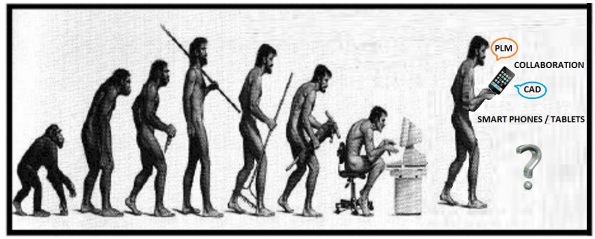
Foreseeing Design Evolution
Can you imagine a car design engineer designing a car on a smart phone or a tablet? In the current situation the answer might be an obvious “No” for smart phones and “May be – Yes” for a tablet. Well, in 2011 – it might sound antic and little complicated stuff to perform design tasks on smart phones but can we ever do it in the future? This struck my mind when I heard about Facebook launching apps after apps for mobile device users. A big question is how fast can the PLM vendors adopt a similar strategy or do they really have to do something similar? Facebook might be trying to reach out to the majority consumers and tapping it’s users from every walk of life and this strategy may not hold good for the PLM world fully. Unlike Facebook company, the PLM vendors might have a slightly varied vision here – their focus would be to concentrate more on the PLM users such as Design Engineers, Program Managers, Product Managers, etc., we see that these set of people belong to a class of skilled workers. This might be an uphill task for the PLM vendors and I’m sure the PLM vendors might be finding it extremely difficult to convert all the heavy weight applications to something light which could be run on mobile devices and not compromising on the outcome. I am reckoning if someday full-fledged CAD apps would be made available on smart phones. To some extent all the collaboration tasks that are currently accomplished through via desktop/laptops over the internet can be seen replaced by light weight apps on smart phones someday soon. This success would eventually provide a lot of flexibility for the PLM users particularly the collaboration software users.
At present my thoughts are mixed and some of the foremost pros I could count on right now are –
1.PLM users could work from any remote location – Design Anywhere Manufacture Anywhere
2.Lesser space required on the shop floor or wherever PLM is currently used
Also, it would gradually create a never before process where in the PLM users would find it handy and have all the freedom to verify the physical unit manufactured by comparing it with the virtual design thereby reducing the use of several resources such as papers for printing.
There could be some less likely disadvantages aswell and the foremost could be Usability – at first instance it would be difficult for the human mind to welcome the compactness or smallness of the smart phone as a design platform but over a period of time and also provided that we see some great advancement in smartphone technology the human mind would atempt to give a try and adopt it naturally.
I’m not sure how many PLM implementing organisations would also see this as a security issue but someone definetely would be interested in foreseeing an evolution and I’m eagerly waiting to see this drastic change in the PLM world happen soon and would be very interested to find out more and be updated.
Your views on this might be different and appreciate if you could type in your perspectives in the form of a comment here or provide a few references to a similar topic on the internet.
Best Regards, Ajit Kini
Is it Collaboration 2.0 or so called PLM 2.0 ?
Collaboration 2.0 or so called PLM 2.0 mean the same !
The intention of this blog post is to list down various Collaborative Business Processes(CBP) followed across the niche manufacturing industries at a very high level and appreciate the current(Year 2011) scope of PLM (ENOVIA, Teamcenter) according to my understanding. The niche manufacturing industries refer to those who participate in launching niche products to the market more so frequently and for instance cars, aircrafts, consumer goods, etc. CBP plays a very important role in entire product development lifecycle since all the Design Engineers (CATIA users, NX users, etc), Manufacturing Planners (DELMIA, Technomatix, etc) and Analyst Engineers (SIMULIA) have to finally store and securely share their data (Intellectual Property) using CBP solution. Please note that same processes are referred to with different names by different PLM vendors.
Program Management Process
Any industry would have some product launch strategies in order to remain competitive in the market. The best way to be competitive and progress ahead is to learn from past mistakes and have a complete control of the present. Product companies fail to make a significant ROI mainly due to the lack of awareness on launching right products to right market and at right time. All probable mishaps or risks could be averted only by having a proper product launch plan. Most industries these days capture product launch process in the form of “Program”. Boeing-787 program is one such revolutionary program launched in the year 2003. Boeing OEM contracted with more than 50 suppliers, 28 of them outside the U.S thereby functioning only as a final assembler and integrator. The Program Managers in such companies need to be equipped with enterprise level Product, Process and Resource management solution. Ideally a program management solution would comprise of the following:
-Program consisting several Projects
-Dashboards used for staff monitoring and maintain project metrics
-Meetings and discussions to arrive at some decisions
-WBS based on business goals
-Stages/Gates/Tasks
-Financial aspects – Budget, Benefit & Forecasting
-Resource Management
-Risk Management
Requirements Management Process
One of the best ways to launch right products to right market is to capture the voice of the customer in the form of requirements. This enables the Product Manager to perform requirements analysis and helps them review, assess, prioritize and balance the needs of the customer. It reduces the overall development costs and rework by bridging the gap between product requirements, design and product launch processes and disciplines. Since the requirements keep evolving, it is important for Product managers to have traceability throughout the evolution of requirements. An ideal requirements management solution would comprise of the following:
-Product Planning
-Requirements Capture
-Requirements Analysis
-Change Management
-Requirements Traceability
Configuration Management Process
Configuration management is a vast subject and plays a very important role in reducing product diversity, but how? Let’s see how most industries organize or classify their offerings. At the top most are “Product Lines” having various “Models” under it. Each Model represents specific products available to customers. Product Managers are responsible for managing the content of each product release for their assigned models. These products in turn have a feature hierarchy typically classified as Configuration/Logical Features. It is possible to arrive at multiple Product Configurations based on the configuration features. These configurations satisfy the customer’s requirements and are building blocks of the end product. Reusing of the same features helps reduce product diversity and at the same time ensures customer’s requirements are also satisfied. An ideal configuration management solution would comprise of the following:
-Product Definition
-Product Decomposition
-Configurable Rules
-Variants
-Product Configurator
-BOM Generation
-Build Management
-Change Management
BOM Management Process
BOM has played an important and inspiring role in conceptualizing PLM. Bill of Materials association with PLM has been there for more than a decade. Some of the very basic solutions that most PLM vendors provide as BOM management solution have been listed in one of my blog post “Smooth handlers for Bill of Materials or BOM users” and I am repeating the same over here:
-BOM Markup
-Compare Tools
-Where Used/ Where Referenced
-Specifications/Reference Documents
-Enterprise Search
-Variant Configuration & Effectivity Filters
-Subscriptions
-Change Management
Compliance Management Process
Compliance Management w.r.t PLM refers to the regulatory compliance management and not with some financial audits like Sarbanes Oxley. It’s got more to do with how, where and with what the end products are being manufactured and also end of life of products. It’s about Carbon emission, it’s about plastic and yes it’s about global warming. Please refer one of my blog post “Dear Stakeholder, beware of Material Compliance Directives!” where you can find a list of compliance directives that are to be followed by product manufacturing industries. The compliance management solution can be best utilized when you have a BOM management solution in place. This enables you to link each of those items in BOM to Manufacturing Equivalent Parts (MEP) and have an association of “Substance Used” to those MEPs, thereby allowing the computation of compliance according to the directives. A best-in-class compliance management solution would ideally provide you the following:
-Materials Data Management
-Materials Compliance Analysis
-Manage Supplier Material Declarations
-Supplier Data Collection
-Determine Engineering BOM Compliance
-Integrate and Analyze External BOM Structures
-Export of Product Compliance to Customers
-IMDS Integration
Sourcing & Supplier Management Process
Sourcing & Supplier Management Process is all about linking buyers and suppliers. Imagine you own a car manufacturing company and you have outsourced most of your car parts manufacturing activities to various suppliers across the world and all that you would need as an OEM is a full fledged supplier management solution to monitor and bridge the gaps. This solution requires collaboration of suppliers and is a very key process in product development it naturally gets associated with PLM. Ideally a sourcing and a supplier management solution would comprise of the following:
-Buyer Desks
-Sourcing Templates
-Electronic RFQ
-RFQ Line Item Power View
-RFQ Quotation Power View
-Decision Support and Analysis
-Where Used RFQ for Parts
-Cross-functional Sourcing Collaboration
-Negotiation
-Generate Costing Information from RFQ Quotations
Manufacturing BOM Management Process
A Design Engineer or a Product Manager releasing the engineering BOM for manufacturing marks the beginning of Manufacturing BOM Management Process. This process enables industries to improve quality and reduce scrap and rework by ensuring pre-conceived “design intent” is followed across multiple manufacturing locations. All the assigned Manufacturing Engineers would work together to manufacture the end product as per the voice of the customer. An ideal manufacturing management solution would have the following:
-MBOM Management
-MBOM Navigation
-Reporting
-Manufacturing Change Processes
Unit Tracking Process
All unique customer requirements are captured into what are known as Product Configurations. Each product configuration is manufactured and shipped to the customer. Each shipped item or build are known as Units. It becomes very important for the industries to track the units. Tracking and managing exact configurations of products already shipped to customer enables a business to quickly review product information to resolve issues with production, warranties and product recalls. This process enables customer satisfaction and retention through endless support and maintenance activities. In order to track each unit, the unit tracking solution should have the following:
-Solution to manage the As-Built BOM
-Unit Part Marking for tracking purpose
-Lot Support
-Unit Tracking and Allocation
Are there any other Collaborative Business Processes or PLM related processes missing over here? Do post in your views or comments right away !
Best Regards, Ajit
Pizzas, Burgers or Boeing-787….???
Its phenomenally similar ! ! !
If you may wish to, then every single thing in the universe could be configurable or rather in most common terms customizable. From eatables like ice-creams,burgers,pizzas to cars like Audi, aircrafts like Boeing-787, Formula 1 cars like McLaren to planning holidays to Switzerland or any of your favorite destinations. Everything is customizable ! ! !
If we look at it closely, then one common thing observable behind the scenes is the application of configuration management principles.
Lets try to find out How?
Its been the nature of we human beings to try something different always and that is what has lead us to think beyond sometimes. We seem to always have never ending preferences or a sense of satisfaction with what we already own. In such a demanding situation its very important for the vendors/retailers to bring about more variations in their offerings more frequently to remain competitive in the market.
Imagine you are an ice cream vendor required to keep the sales ticking regardless of the summer, winter or rainy seasons of the year. You would be very happy selling ice creams in summer whereas in winter and rainy you may require to be more strategic and smart. The first thing you would do is to have a detailed look at what are your current offerings for the ongoing summer season and do a what-if analysis on the offerings to come out with a practical offering plan for the next seasons. The situation becomes more demanding if you are a global player and require to sell across geographies according to variable prices and tastes.
Now, imagine you are an aircraft manufacturer or a formula 1 car manufacturer. Both are equally demanding environments and we do get to see conceptual similarities in these environments. Configurations, customizations, handling variations, performing what-if analysis, controlling changes, change approvals are some of the prevailing principles across these variety of businesses.
Dassault Systemes ENOVIA Variant Configuration solution together with other ENOVIA governance products like Program Central could be a perfect mix of solution to handle such demanding situations.
So from the above instances what are the key principles of configuration management that you and me can think of at this moment –
1.Product Planning
2.Product Definition
2.Product Variations/Variants
3.Product Configurations
4.Bill of Materials based on Configurations
5.Resolution or Change management
If you are interested about the solution then do have a detailed look at 3ds website.
Best Regards, Ajit
Dear Stakeholder, beware of Material Compliance Directives !
Dear Stakeholder, beware of Material Compliance Directives or else PAY for it !
Of late, Sustainability is a buzz word for the OEMs and Suppliers ever since global warming was discovered as a threat to our beloved earth. I tried to google more about various regulatory compliance directives followed across geographies and to my surprise I had to browse several websites to find out all the norms followed and I felt its wise to collate general information about compliance in one place and again based on my understanding I thought of putting into perspective when is the right time to introduce material compliance as a PLM solution in the Product development phase.
First of all lets see what are the various compliance directives or norms or definitions available as of today:
Restriction of Hazardous Substances(RoHS) pronounced as “ros”
RoHS is often referred to as the lead-free directive,along with lead it also restricts the use of the five more substances:
- Lead (Pb)
- Mercury (Hg)
- Cadmium (Cd)
- Hexavalent chromium (Cr6+)
- Polybrominated biphenyls (PBB)
- Polybrominated diphenyl ether (PBDE)
Everything that can be identified as a homogeneous material must meet the limit. Homogeneous here refers to individual substance, all of the same or similar kind or nature or that can be separated mechanically. The maximum permitted concentrations are 0.1% or 1000 ppm(Parts Per Million) by weight of homogeneous material. This means that the limits do not apply to the weight of the finished or end product but applies to single substance that could (theoretically) be separated mechanically — For instance, a circuit board is composed of PCB, ICs, resistors, capacitors, switches, etc. The limit(0.1%) is applied on individual similar substances.
RoHS started by European Union is a mandatory norm for 25 countries like Austria, Latvia, Belgium, Lithuania, Bulgaria, Luxembourg, Cyprus, Malta, CzechRepublic, Netherlands, Denmark, Poland, Estonia, Portugal, Finland, Romania, France, Slovakia, Germany, Slovenia, Greece, Spain, Hungary, Sweden, Ireland, United Kingdom and Italy.
RoHS directives are also adopted by –
- California RoHS – January 07
- China RoHS – March 07
- Korea RoHS – July 07
- Japan RoHS
- Taiwan RoHS
RoHS is mainly applicable for High-Tech,Semiconductor,etc.
Waste Electrical and Electronic Equipment Directive(WEEE) pronounced as “we”
WEEE directive imposes the responsibility for the disposal of waste electrical and electronic equipment on the manufacturers of such equipment. Those OEMs and Suppliers should establish an infrastructure for collecting WEEE, in such a way that “Users of electrical and electronic equipment from private households should have the possibility of returning WEEE at least free of charge”. Also, the OEMs and Suppliers are compelled to use the collected waste in an ecologically-friendly manner, either by ecological disposal or by reuse/refurbishment of the collected WEEE. One important thing to note over here is that the consumers return their used e-waste free of charge.
Despite such rules on collection and recycling only one third of electrical and electronic waste in the European Union is reported as separately collected and appropriately treated. A part of the other two thirds is potentially still going to landfills and to sub-standard treatment sites in or outside the European Union.
WEEE is mainly applicable to High-Tech industry.
Registration, Evaluation, Authorisation and Restriction of Chemicals(REACH) pronounced as reech
REACH entered into force on 1st June 2007. It streamlines and improves the former legislative framework on chemicals of the European Union (EU). The main aims of REACH are to ensure a high level of protection of human health and the environment from the risks that can be posed by chemicals, the promotion of alternative test methods, the free circulation of substances on the internal market and enhancing competitiveness and innovation.
REACH makes industry responsible for assessing and managing the risks posed by chemicals and providing appropriate safety information to their users. In parallel, the European Union can take additional measures on highly dangerous substances, where there is a need for complementing action at EU level.
REACH is applicable to most of the industries which includes High-Tech,Automotive,Industrial Equipment, Aerospace & Defense, Consumer Goods etc.
End of Life Vehicle(ELV)
ELV lays down specific requirements for the management of end-of-life vehicles. The Directive’s main objective is the prevention of waste from vehicles and, in addition to this, the reuse, recycling and other forms of recovery of end-of-life vehicles and their components so as to reduce the disposal of waste. The Directive also aims to improve the environmental performance of all economic operators involved in the life-cycle of vehicles and especially the operators directly involved in the treatment of end-of-life vehicles.
The directive aims to make vehicle dismantling and recycling more environmentally friendly,also set clear quantified targets for reuse, recycling and recovery of vehicles and encourages producers to manufacture new vehicles which are easy to recycle.
ELV is mainly applicable to Automotive industry.
If you are aware of any other Material Compliance directives please direct me to those links.
When to introduce Material Compliance?
Compliance can be and should be introduced in the Product Conception or Product Definition phase and also what goes into the actual product can be monitored during Product Design phase. To a great extent compliance can also be at the back of your mind during the Testing or Simulation of the product and of course compliance matters most during Manufacturing of the product, transportation and also very importantly End of Life of the product where the waste management becomes a very important aspect in adhering to product compliance. If you observe closely everything mentioned so far can run in a cycle(Conception-Design-Testing-Manufacturing-Waste-Conception) and its obvious that more the number of cycles the same material goes through, its quite an indicative factor that the manufacturer is introducing a highly compliant product to the market.
If you are aware of any other directives apart from the directives mentioned above, please direct me to those links.
To summarize, its a fact that human population by virtue of their wants and needs have already thrown huge amount of harmful substance into the atmosphere across the globe and it becomes highly important to put a break or minimize the usage of these harmful substances and be wise to reuse or recycle the wastes.
ENOVIA Material Compliance solution is one such product which can come to the rescue of the product stakeholders. Try this product at a very early stage of your product development and reap benefits effortlessly.
For further information about the compliance solution please visit ENOVIA ->Governance-> Compliancy.
Best Regards, Ajit
55 percent of the seafood in Walmart stores is certified! ! !
Yes ! ! !
At least 55 percent of the seafood in Walmart stores is certified as having been caught with sustainable fishing practices, all its large electronics equipment and personal computers are manufactured without hazardous materials.
Wow…!!!
Walmart is one such retailer who have completely changed the way they handle logistics, operations, and sales practices. This has naturally altered the mindsets of consumers making them all the more cautious of what they consume and their buying habits have witnessed a drastic shift. Consumers are now more aware and are demanding for greener products. Surely a right way to go isn’t it !
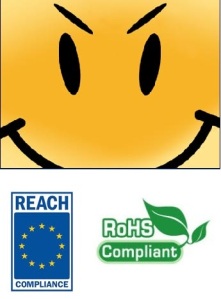
Material Compliance Management
We have already started to see such a growing awareness among consumers and without any second thoughts I believe its the consumers who would be key drivers in making product companies adopt compliancy without any kind of ignorance.
While most of the companies have started viewing Materials Compliance as a means to fulfill Corporate Social Responsibilities, a few others have ignored. For instance sometime back it was estimated that the value of noncompliant automotive aftermarket parts exported to the United States exceeded $2.7 billion. A real worry ! ! !
In a highly competitive consumer market following compliance and bringing greener and sustainable products to the market is the need of the hour and also an important survival startegy.
Walmart Fish store is quite an inspiration ! ! !
So, how Materials Compliance solution help companies???
1.Enables to build trustworthy products
2.Provides a competitive differentiation in the market
3.Promotes product innovation
4.Helps branding on the grounds of sustainable products
5.Very importantly helps avoiding penalties from government or regulatory bodies
The companies are at greater advantage when compliance is implimented earlier in the design phase of the products thereby minimizing percolating costs if implimented at a later stage.
Dassault Systemes ENOVIA Material Compliance Central provides a comprehensive compliance solution that enables companies to track, analyze, and report a product’s environmental compliance.
For more information please click here
Wishing You A Very Happy New Year 2011 ! ! !
Best Regards, Ajit
Smooth handlers for Bill of Materials or BoM users
Bill Of Material or BoM is often assumed to be a very complicated and integral aspect of a PLM system. Its a challenge to solution providers to keep BoM Management solution simple and at the same time provide a very comprehensive representation of the product structure.Its very important to simplify a BoM user’s life by providing easy to use BoM Managment solution.
In my quest to find out what are the features that a BoM customer would love to have in a BOM Management solution, I have listed down a few key capabilities that will add value to the BoM users.
BoM Markup
It is one unique feature that allows BoM users to save the changes or modifications to the structure.The modification refers to the adding or removing or replacing of the parts. This feature lets the user save the modifications and resume back.The changes are marked using some color codes which enables the BoM users easily identify the previous changes applied to the structure.This way the BoM users reduce rework and also save a great amount of time.
Compare Tools
This feature for surely makes the BoM users life a cake walk.On a higher level any user would like to make two kinds of comparisons 1-Object Comparison and 2-comparing the BoM structures itself. Object compare lets the user compare the basic attributes of the objects and allow the users to make dependent decisions and the structure compare would help the user compare two different assemblies and to some extent allow the users to even synchronize the structures after comparing the structures.This really makes life very easy by letting you avoid the complexity of traversing the structures repeatedly to do the necessary structural modifications.
Where Used/ Where Referenced
Imagine you have traversed to a very complex structure and now you really need to know the roots, where used /where referenced is one such utility that makes you breathe some fresh air. With the increasing amount of product complexity in today’s world Where Used/Where referenced plays an angels role in letting you find the roots regardless of the complexities involved.
Specifications/Reference Documents
Of course BoM would just be a skeleton without the appropriate specifications or reference documents.The specifications are basically the CAD files or the 2D or most recently the 3D files. This lets the engineering team to check in the appropriate(manual justification) CAD files into the part object representation in the BoM.
Enterprise Search
The current generation can’t imagine a life without google. Applying the same principles, a BoM user would require to quickly search the parts in the system and kind of assign the parts and come up with a perfect assembly. Enterprise search is another very dependable capability in the eyes of a BoM user.
Variant Configuration & Effectivity Filters
Mass Customization is the order of the day. The user must be able to generate a BoM based on Product Configuration and same time should be able to filter the BoM based on different Product Configurations.
Subscriptions
Subscriptions could be email based or even RSS feeds based. Its one of the quickest way to inform end users about the modifications and enable a faster approval process. Subscriptions are preference based and its mandatory for the user to subscribe to the events to avail the subscription features.
These are some of them I could quickly think of….
What are your thoughts and what other functionalities could add value to a BoM user?
Best Regards, Ajit
Beware : The Rules are NOT meant to be broken ! ! !
Rules are meant to be broken? Definitely not when it comes to Product Configuration. Configuring a product can be very complicated if a mediocre rule management system is adopted. Below is a list of basic advantages of using different kinds of rules which help in mass customization or Product configuration.
Basically, rules help in
- Increasing Reusability
- Reducing time
- Validating and Generating Preview BOM
Listed below are some of the rules that are put to use by various Product Configurator vendors. Again we have a high level classification as
- Programmable rules
- Constraint Based rules
Programmable Rules are those that are procedure based where every product configuration is achieved by writing complicated codes. For instance if you want to configure a mobile phone with camera you would be writing a method/function as
mobilePhoneWithCamera(){ if(mob==camera){genrateBOM();}}
Progam based approach would be very cumbersome and reusability is almost impossible to achieve. On the other hand, Constraint based rules help us overcome a lot of above mentioned issues. Constraint based engines are used where configuration decisions are made dynamically based on inputs provided by the customer. Constraint based rules help domain experts to easily and flexibly represent a constraint model. Constraints can be expressed in several forms as mentioned below:
- Compatibility Rules
- Inclusion/Exclusion Rules
- Resource Rules
- Feature Selection – May or Must selections of features
- Quantity Rules
In this case if we take up the same mobile phone with camera as an example, constraint based rules would provide the user a combo box with 2 options say “Camera” or “Non-Camera” to make the right selection. Upon selecting an option, rules (constraint based) are validated dynamically and Product Configuration can be created instantly.
Now my query to you is do you know any other advanced way of configuring a product with or without rules approach?
An interesting LinkedIn thread related to a query on rules can be accessed by clicking here.
With Dassault Systemes ENOVIA Variant Configuration Central, companies can define conceptual product definitions that can be reused across a multiple series of products, satisfy market specifications, and provide many possible optional capabilities. These conceptual product definitions serve as a framework for defining variant products that are configurable and drive the generation of design bills-of-material (BOM). This product provides both programmable and constraint based representation of rules. Check Out !
Best Regards, Ajit
Open PLM Standards: An Industrial Emergency
Despite non-stop rains over the weekend in Pune, it was a happy weekend for me because we unexpectedly purchased a new Philips home theatre system for a very meager amount.We have a 21 inch Videocon LCD TV which had an average sound quality.To enhance the sound experience we decided for a home theater system.To our surprise we got a really cheap and affordable home theater system at a nearby super market. During the installation one thing stroked my mind was about the flexibility with which these 2 different products from 2 different vendors worked with absolutely no glitches. I was just wondering a day when Siemen’s NX solutions worked with Dassault Systems ENOVIA solution with no glitches or the CATIA unified with Teamcenter. If we closely observe the reason why Videocon and Philips work together may give the PLM vendors an answer to most of the manufacturing worlds interoperability issues.
According to my perspective,One of the foremost reasons why Philips home theater works with Videocon TV is because both these vendors follow common electronic standards.
“A electronic standard is generally a documented agreement, established by a consensus of industry experts and approved by a recognized body,that provides rules, guidelines or characteristics to ensure that certain materials, products, and processes are fit for their purpose. In many cases, standards in electronic industry are voluntary. However,voluntary consensus standards developed by industry are often subsequently adopted by the governments as part of the regulatory framework. The state laws also establish some mandatory electrical characteristics such as those related to energy efficiency and power consumption.”
Its high time the PLM world adopts certain standards to solve many such industry issues by cultivating a Live and Let Live attitude and having some PLM standards,rules, guidelines to ensure that the different Business Process Applications talk well with each other regardless of its origin.
So do you agree the PLM world requires a governing body to solve the related issues of industrial worlds? Do post your views.
Best Regards, Ajit
